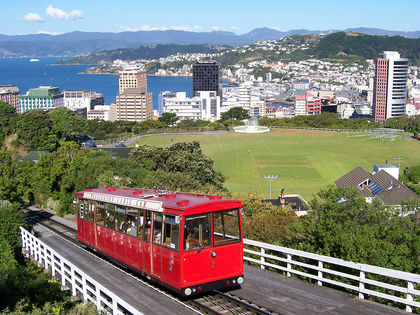New Zealand - Poverty and wealth

According to United Nations Development Program 's (UNDP) Human Development Indicator (HDI), New Zealand ranked 19th on the list of countries in terms of education, health, and the quality of life in 2001. This ranking is lower than it once was, but still definitely qualifies New Zealand as one of the world's "wealthy" countries. In terms of per capita GDP it is substantially below the American level, although between 1975 and 1998 real GDP per capita showed steady growth.
In the past, New Zealand has had a reputation as an equitable society because it was the first country in the
| GDP per Capita (US$) | |||||
| Country | 1975 | 1980 | 1985 | 1990 | 1998 |
| New Zealand | 14,005 | 13,961 | 15,416 | 15,026 | 16,427 |
| United States | 19,364 | 21,529 | 23,200 | 25,363 | 29,683 |
| Australia | 14,317 | 15,721 | 17,078 | 18,023 | 21,881 |
| Papua New Guinea | 1,048 | 975 | 936 | 888 | 1,085 |
| SOURCE: United Nations. Human Development Report 2000; Trends in human development and per capita income. | |||||
world to give women the vote (1893), and it was one of the first to develop a welfare state, among other things. Yet a look at the income distribution in 1996 reveals that income is very unequally distributed, with the lowest 20 percent of income earners accounting for only 2.4 percent of all income, while the top 20 percent earned 51.8 percent, and the top 10 percent more than one-third of the total. A comparison of the data for 5 years earlier shows that in each of these last 2 categories the percentages have increased by nearly 5 percent (from 46.9 and 29.8 percent, respectively).
When gender differences are considered, it is shown that in the top 10 percent of income earners, only 22 percent are females. Although the equivalent comparison is not available by ethnicity, a comparison of median income is clear: men of European ethnic background earned 20 percent more than Maori men and 38 percent more than those of Pacific island origin.
Inequalities in income have existed for a very long time and result partly from large wage differences between professionals and managers on the one hand and unskilled laborers on the other. Minority ethnic groups and women tend to hold a disproportionate number of jobs in certain sectors, often those that are most vulnerable to economic change, such as seasonal work (e.g. fruit harvesting, food processing) and casual work (e.g. outwork
| Distribution of Income or Consumption by Percentage Share: New Zealand | |
| Lowest 10% | 0.3 |
| Lowest 20% | 2.7 |
| Second 20% | 10.0 |
| Third 20% | 16.3 |
| Fourth 20% | 24.1 |
| Highest 20% | 46.9 |
| Highest 10% | 29.8 |
| Survey year: 1991 | |
| Note: This information refers to income shares by percentiles of the population and is ranked by per capita income. | |
| SOURCE: 2000 World Development Indicators [CD-ROM]. | |
| Household Consumption in PPP Terms | |||||||
| Country | All food | Clothing and footwear | Fuel and power a | Health care b | Education b | Transport & Communications | Other |
| New Zealand | 21 | 5 | 12a | 3 | 2 | 8 | 49 |
| United States | 13 | 9 | 9 | 4 | 6 | 8 | 51 |
| Australia | 24 | 5 | 9 | 2 | 16 | 9 | 36 |
| Papua New Guinea | N/A | N/A | N/A | N/A | N/A | N/A | N/A |
| Data represent percentage of consumption in PPP terms. | |||||||
| a Excludes energy used for transport. | |||||||
| b Includes government and private expenditures. | |||||||
| SOURCE: World Bank. World Development Indicators 2000. | |||||||
on clothing). In New Zealand the restructuring which took place after 1984 had a considerable impact on work patterns, with many becoming unemployed in the private sector as tariffs were lowered or subsidies withdrawn, and in the public sector as government services were reduced. In the late 1980s ethnic minorities in particular were affected, with unemployment rates 2 or 3 times the national average. Workers were also affected by changes in labor legislation which reduced the power of unions (see Working Conditions section). On the other hand, many investors made large profits in the recently deregulated finance sector.